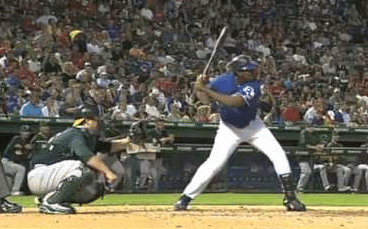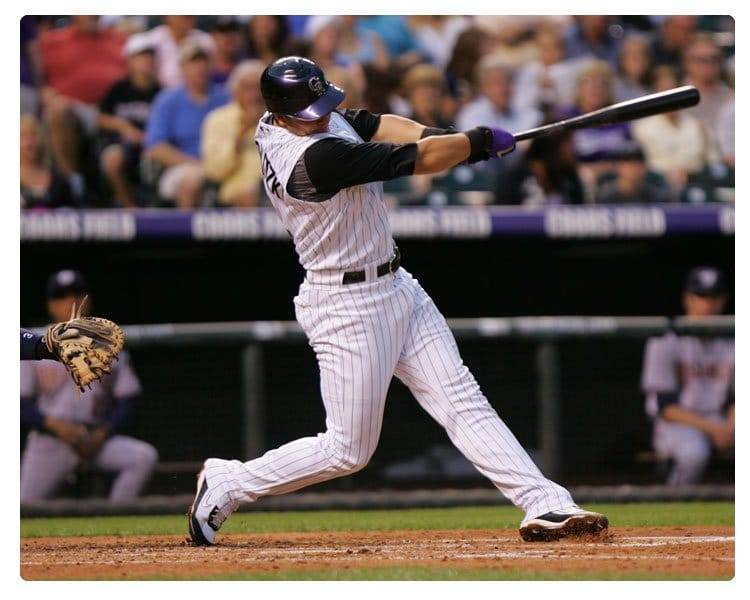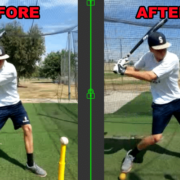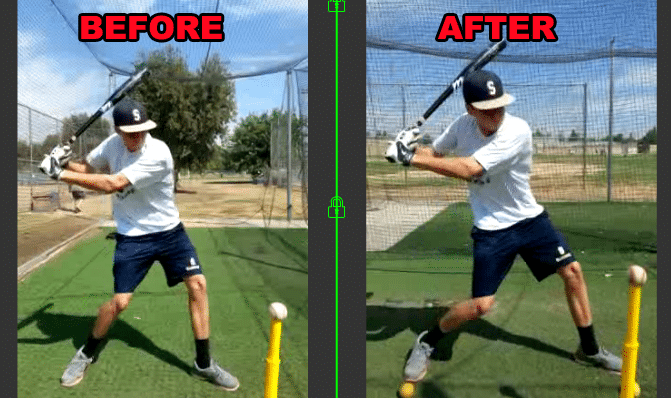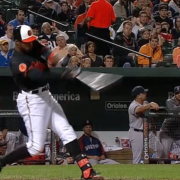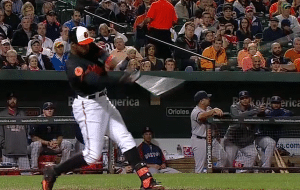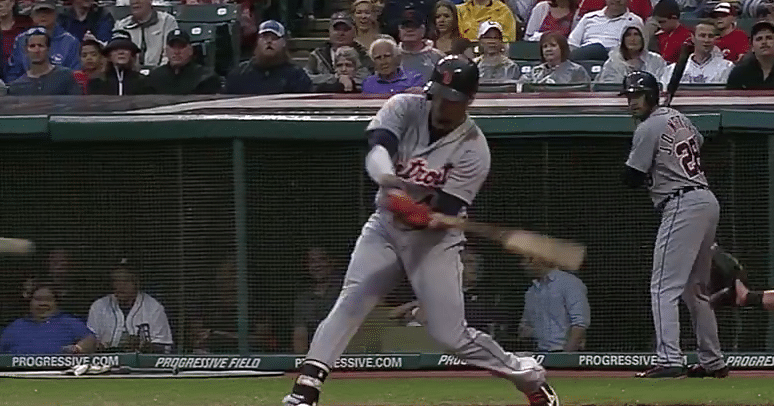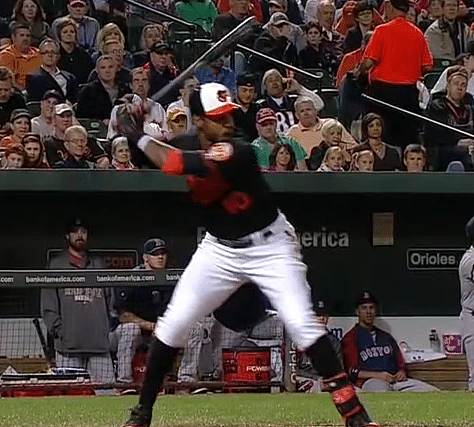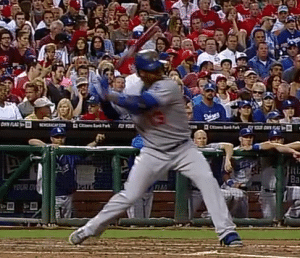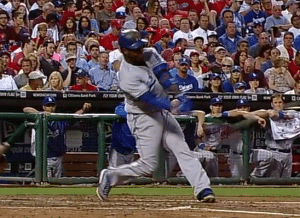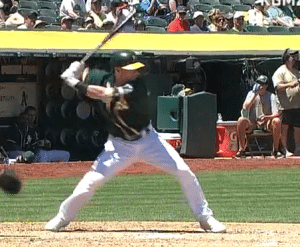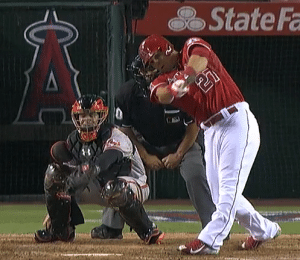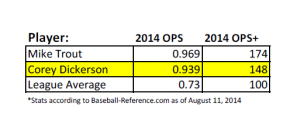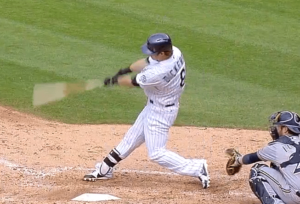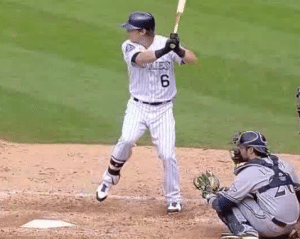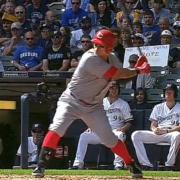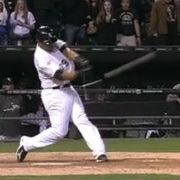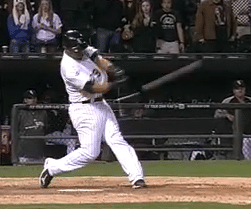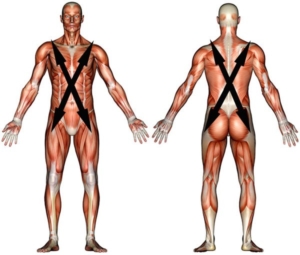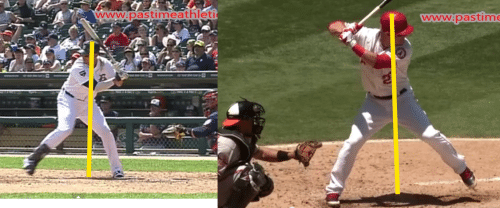
Victor Martinez & Mike Trout head position at stride forward. Camera angle is different, but watch videos below and note how V-Mart’s head doesn’t move with the front foot. Pictures courtesy: PastimeAthletics.com
Hint, hint…it has to do with balance! This is a bonus to our Why Your Balance Fails series on balance. I will be discussing:
- The balance of pyramids,
- The lateral movement of dancers, and
- Mike Trout Slow-motion perfect balance during the stride…
The Balance of Pyramids
Pyramids have a capstone that is centered over the base.
In baseball, good balance occurs when the head is centered between the feet.
The Lateral [to the side] Movement of Dancers
I asked a woman who was a modern dancer for several decades who is making a film on movement,
“What is the proper way to move to the side?”
Her response was,
“The body has to move with the foot”.
Mike Trout Perfect Balance During the Stride
Hitting requires balance…
But the stride requires dynamic balance, or balance while in motion.
A couple things I want to point out in the following slow motion swing of Mike Trout…notice how:
- Mike Trout’s leg moves forward, so that the head is centered between the feet during the stride,
- His body moves with his front foot, and
- Efficient his swing looks….
To Contrast and Compare, here is Victor Martinez. An extremely successful hitter, with a gift of incredible hand-eye coordination and strength…
Let’s compare them both at the moment the front foot touches the ground:
- Trout- Head between the feet.
- Martinez- Head closer to the back foot.
- Trout-Shoulders angled down.
- Martinez-Shoulders angled up (or level).
However, they both reach perfect position at the moment the bat hits the ball. And they both have the same backward lean with the head in line with the front leg…
Who has better dynamic balance?
Mike Trout. To move more like him, the cue is “move the body with the foot”.
(Note from Joey Myers: the camera angles are a little goofy, but I urge you to look at other “chest view” video of Victor Martinez, and you’ll see the same result. Like Dr. Stanley said, he’s got SUPER hand-eye coordination! BUT here’s the thing, he doesn’t angle his shoulders down, show his numbers to the pitcher or hide his hands as well as Mike Trout does before landing. And as a result, his front shoulder has a tendency to “peel out”. Adding these ingredients into V-Mart’s swing could have won him the 2014 AL MVP ;-))
In case you missed Parts 1-3 of the Why Your Balance Fails series, then here they are:
- Why Your Balance Fails Part-1: how-to correct movement dysfunction from an early age,
- Why Your Balance Fails Part-2: 1 simple exercise to cure balance issues, and
- Why Your Balance Fails Part-3: Crucial Way To Land On The Foot.

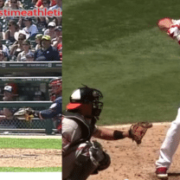

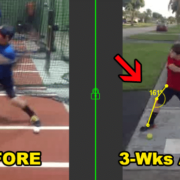
![Baseball Training VIDEO: #1 Hitting Mistake To Boosting BABIP [Case Study]](https://hittingperformancelab.com/wp-content/uploads/2014/11/baseball-training-pitch-plane-dylan-case-study.png)
